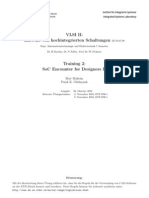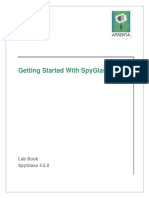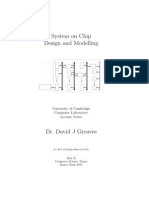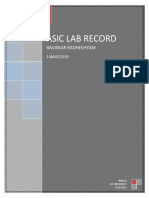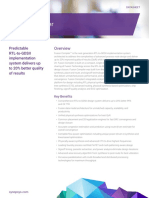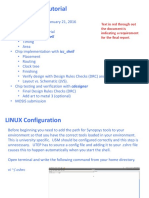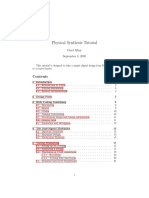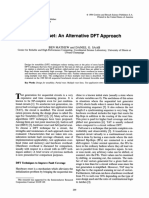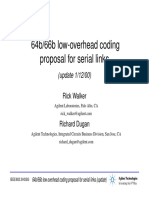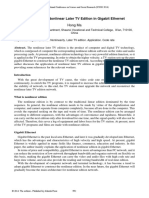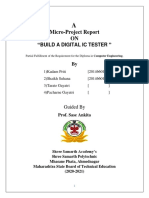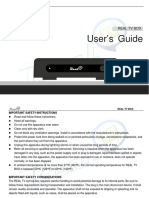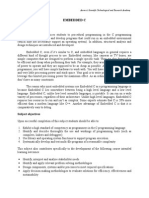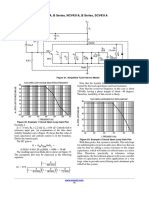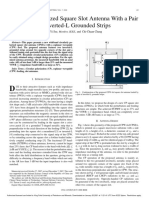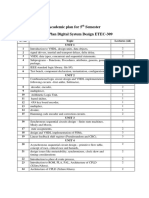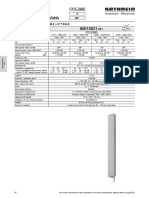0% found this document useful (0 votes)
1K views18 pagesRTL To GDS Flow Automation: Step - 1: Initially The Design Environment Needs To Be Setup
This document provides a summary of the steps to generate a GDS file from an RTL design. It involves logic synthesis to convert the RTL to a netlist, followed by physical design steps like floorplanning, placement, routing to convert the netlist to a GDS file. Key steps include setting up the design environment, compiling and simulating the RTL, performing logic synthesis, equivalence checking, timing analysis, physical design and generating the final GDS file.
[/SUMMARY]
Uploaded by
Malka RavikrishnaCopyright
© © All Rights Reserved
We take content rights seriously. If you suspect this is your content, claim it here.
Available Formats
Download as PDF, TXT or read online on Scribd
0% found this document useful (0 votes)
1K views18 pagesRTL To GDS Flow Automation: Step - 1: Initially The Design Environment Needs To Be Setup
This document provides a summary of the steps to generate a GDS file from an RTL design. It involves logic synthesis to convert the RTL to a netlist, followed by physical design steps like floorplanning, placement, routing to convert the netlist to a GDS file. Key steps include setting up the design environment, compiling and simulating the RTL, performing logic synthesis, equivalence checking, timing analysis, physical design and generating the final GDS file.
[/SUMMARY]
Uploaded by
Malka RavikrishnaCopyright
© © All Rights Reserved
We take content rights seriously. If you suspect this is your content, claim it here.
Available Formats
Download as PDF, TXT or read online on Scribd
/ 18


